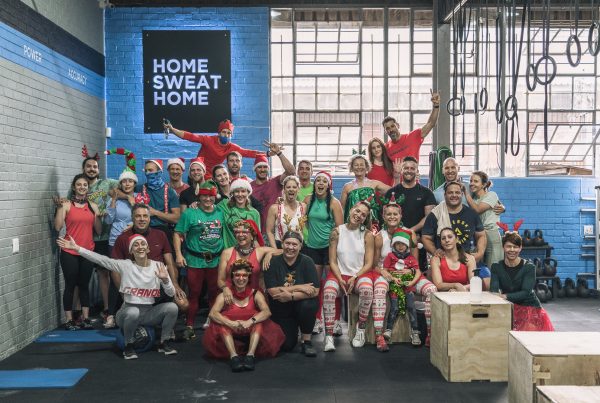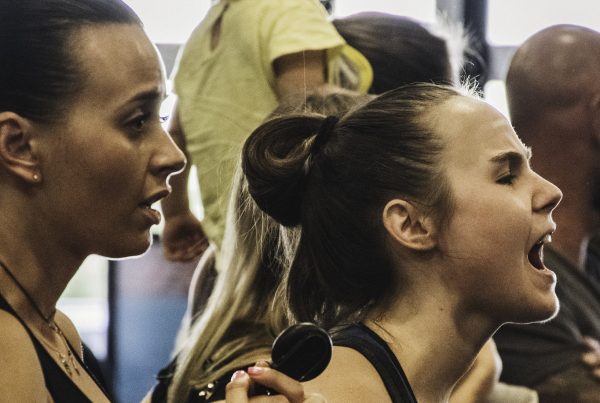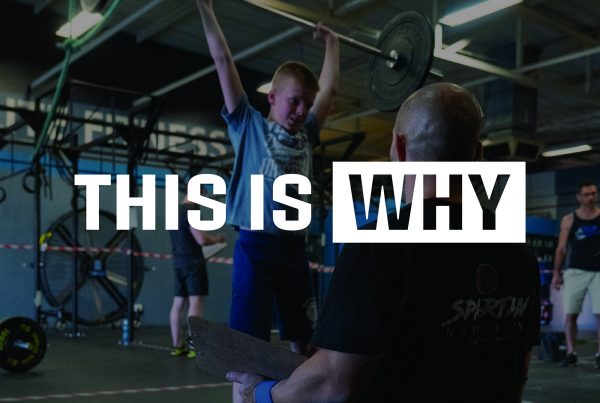Aahhh, the old volume and intensity topic. It’s always worth revisiting to remind existing athletes and inform newer athletes of the relationship between the two variables.
Volume in training refers to the total amount of repetitions completed in a session and throughout the day. Intensity, to put it simply, is the amount of work you do relative to the time it takes to do the work. Therefore, intensity has little to do with how hard you think you’re working. You might think that having the RXd load on the bar is harder and therefore more intense, but the maths shows poor power output (intensity) due to less reps completed in the allotted time.
Contrary to much belief, volume is not necessary if the goal is to get fitter. Remember, we define increased fitness as increased work capacity across broad time AND modal domains. That is, improving the capacity of all energy systems, enhancing each of the ten recognised physical traits you see painted up on the gym walls, and being capable of performing well at any imaginable physical task. More volume won’t get you there.
So how do we achieve that sort of fitness? By a healthy daily dose of constantly varied, functional movements applied at high intensity. To state the obvious, volume doesn’t feature anywhere there. Doing more isn’t going to make you fitter.
Volume and subtle variations thereof have their place in programming, especially in the realm of athletes who are training specifically for multi-event, multi-day competitions. But even for these individuals, the extra volume is only going to work if intensity remains high. Intensity is the independent variable most closely associated with favourable adaptations to exercise. Without intensity, therefore, you have poor results. Adding volume, be it within a session or throughout the day, inevitably comes at the cost of intensity.
Let’s consider one of our daily workouts – the daily workout being the entire hour including warm-up, cool-down, skills, strength, and/or conditioning. A metcon is only a piece of the session, not the workout. We typically do one metcon if we the goal of the day is conditioning, and sometimes it comes along with skill or strength work. Think about how you’d perform if we layered on more metcons. Do a 7-minute metcon, rest a bit, and then hit a 10-minute piece before finishing of with another 20 minutes worth of conditioning. If you tried to achieve some sort of intensity, you’d manage that in the first metcon and maybe a bit in the second, but as you proceed you’ll begin to do less work than you might have if you were doing that piece alone.
Your applied effort might still be as high as it was at the beginning of the session, but your true intensity (power output) will naturally diminish as that sort of session progresses. Or you’ll deliberately sacrifice intensity by saying “that’s a lot of work so I’m just going to pace all the way.” Either way, it’s less intensity in favour of volume.
Sure, you’d be working lots so your oxidative energy system will be stimulated, but that’s coming at the expense of time in the anaerobic energy pathways – you’re only increasing work capacity in one time domain. With the added work comes along the need for more recovery too, and let’s not kid ourselves, most of us only have the time to get all our fitness work done in one hour a day so you’ll end up sacrificing good recovery practices in favour of getting more done. And when will you get the opportunity to practice and develop new skills?
Worse yet, more and more work will just take you back to where the fitness community came from – long gym sessions at low intensity with poor results. Hang out in that fat burning zone, bro, skinny fat looks good on you!
More volume for the sake of doing more is not only counterproductive but potentially harmful too. You can however add extra work that is productive. Identify a few weaknesses and drill one of them a day in a focused 15 minute session. This is the best way to refine your skills, and if you take a page from the books of the best athletes in any sport, this is where they spend the bulk of their extra time. Dialling in that foot position, fixing their timing, getting familiar in a new position.
Skills and drills are your biggest bang for buck outside of class time. Now you’ve got to have fun too so play around with stuff we don’t get to in class as often. But if you’ve got ankles as flexible as cold chewing gum and shoulders incapable of properly holding an empty barbell overhead you’re better off on stretching and skills and drills than getting your meathead work done.
Not sure what to do? Pay more attention during class, we cover progressions daily. Even better, book a consult with a coach, consider the UpSkill plan and review it every four. Work harder, not longer. It’s more bang for your buck!



